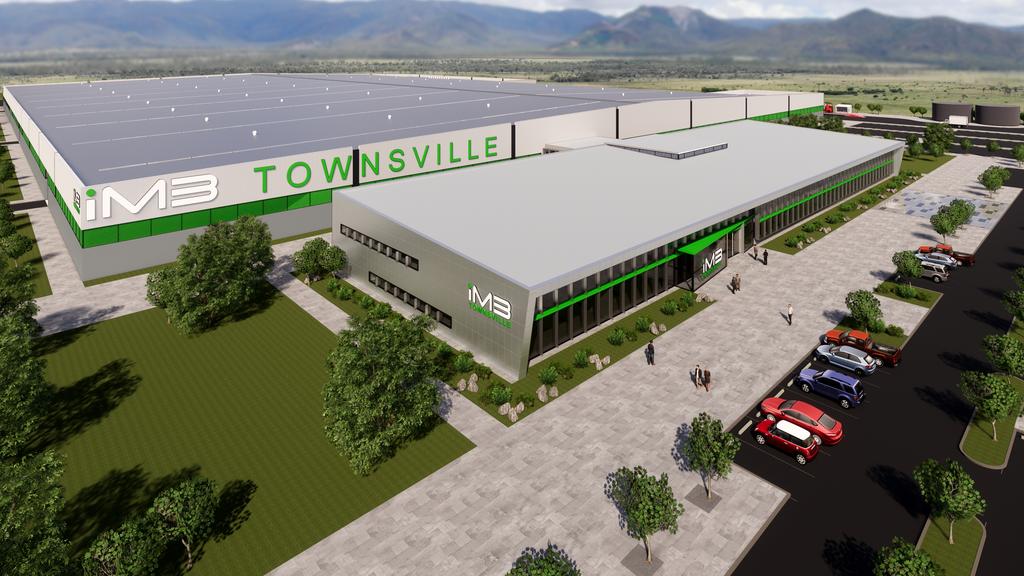Townsville’s lithium-ion battery gigafactory has made a big step forward in the pre-development application phase with the submittal of the project feasibility study to the Queensland Government. The project proposal is expected to move into the development approval process in the coming months, while project proponents Imperium3 consortium (iM3TSV) will be on the lookout for debt finance.
In the previous period, iM3TSV, which consists of Magnis Energy, C4V LLC New York and Boston Energy and Innovation, has also been busy consulting community, local and state government and businesses, including the Port of Townsville to develop its transport and logistics solutions, the James Cook University for collaboration on future education and training, and renewables developer Edify Energy about the supply of low-cost, renewable power to the battery production facility.
Capital costs, site and timeline
The feasibility study was underpinned by the Queensland Government, which provided $3.1 million towards the project last year. Minister for State Development, Manufacturing, Infrastructure and Planning Cameron Dick stated at the time that the study is a key requirement for attracting the next stage of funding and is expected to be completed in 2019. “We expect Imperium3 will make the final investment decision by mid-2020,” he said at the time.
According to an ASX update released by graphite miner Magnis Energy on Tuesday, the feasibility study investigated the viability of developing an 18 GWh lithium-ion battery manufacturing plant in Townsville over three stages and demonstrated sound financial viability on a project basis with an NPV of $2.55 billion and 21% IRR.
The consortium has recently appointed National Australia Bank (NAB) as its financial advisor to assist in developing a project funding strategy following significant due diligence. “For NAB to put their name to anything and come on board is a big deal,” Magnis chairman Frank Poullas said at the time. “The fact they are confident they can work with us raise the necessary funds to get Townsville up and running is a huge testament to us.”
As previously announced, the decision was made to phase the project development into three stages at 6 GWh. “This not only reduces the upfront capital requirement but also allows for the project expansion to occur in line with market development,” Magnis said in an earlier statement. Project capital cost for all 3 stages was estimated at $3 billion, up from originally flagged $2 billion, with 1150 direct jobs when operating at full capacity.
Namely, the feasibility study determined that $1.12 billion will be needed for the first stage and around $945 million and $963 million for the later stages. “The cost for stage 1 is slightly higher than stages 2 and 3, due to the need for iM3TSV to contribute to the cost of extending some trunk infrastructure services to the site,” Magnis explains.
The proposed site for the projects is Lansdown Station approximately 40km south of the Townsville CBD. As the developer of the Lansdown Industrial Precinct, where the battery plant will be located, Townsville City Council will assume a “small ownership stake in the project.” The precinct is intended to be Northern Australia’s first environmentally sustainable advanced manufacturing, processing and technology estate. It will be powered by 200 MW Majors Creek Solar Farm, which is being developed by Edify Energy.
The project’s execution schedule indicates the construction of the first stage would commence in Q3 2020 and be completed by the end of Q3 2022. Operations and manufacturing at the first stage are scheduled to commence in Q4 2022.
Battery and manufacturing process
The consortium has selected a cylindrical 32700 form factor for its battery cells. According to Magnis, this cell type is better suited to high volume manufacture and offers improvements in performance and cost whilst still maintaining flexibility in the range of applications for its use.
The manufacturing process was developed with the iM3TSV’s strategic partners and vendors of manufacturing equipment including Durr Megtec and Siemens looking to incorporate the latest advancements in battery cell production to increase overall efficiencies and production yields. The solution was delivered by Brisbane-based engineering specialists Ausenco, which was responsible for combining the individual vendor packages into a fully integrated production process.
As per the next steps, the consortium expects to complete and submit a development application to Townsville City Council for formal consideration in the coming months, as well as execute a funding strategy with the assistance from NAB. iM3TSV is also planning to commence battery cell production testing in a commercial setting at equipment vendor facilities. “iM3 battery cells will be provided to customers for independent evaluation and qualification as a precursor to procuring offtake contracts,” Magnis said.
This content is protected by copyright and may not be reused. If you want to cooperate with us and would like to reuse some of our content, please contact: editors@pv-magazine.com.









By submitting this form you agree to pv magazine using your data for the purposes of publishing your comment.
Your personal data will only be disclosed or otherwise transmitted to third parties for the purposes of spam filtering or if this is necessary for technical maintenance of the website. Any other transfer to third parties will not take place unless this is justified on the basis of applicable data protection regulations or if pv magazine is legally obliged to do so.
You may revoke this consent at any time with effect for the future, in which case your personal data will be deleted immediately. Otherwise, your data will be deleted if pv magazine has processed your request or the purpose of data storage is fulfilled.
Further information on data privacy can be found in our Data Protection Policy.